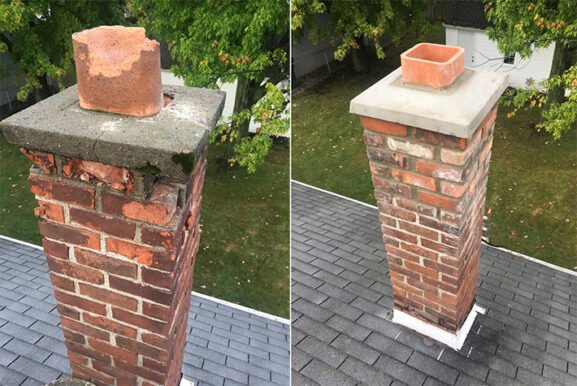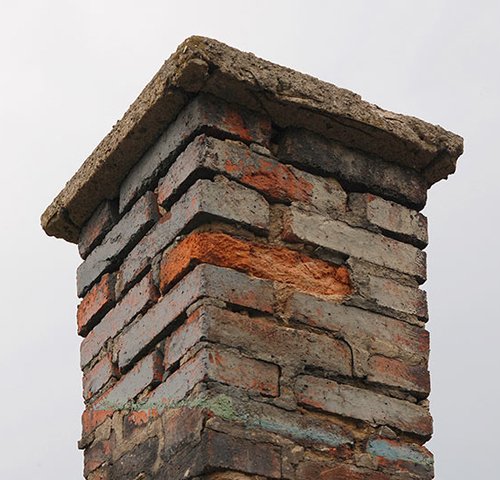What to Know Before Using a Chimney Repair Cost Calculator
Key Takeaways
- Chimney repair costs can vary significantly depending on the type and extent of the damage
- Online cost calculators are useful but often provide only a basic estimate
- Factors like chimney height, material, and local labor rates impact total expenses
- A professional inspection is essential for an accurate repair assessment
Why Homeowners Turn to Cost Calculators for Chimney Repairs
For many homeowners, understanding how much chimney repairs will cost is not straightforward. It’s not always clear what goes into the final bill, especially when multiple elements like structural damage, liner issues, and flashing concerns come into play. That’s where online chimney repair cost calculators come in. These tools give users a rough estimate based on input like chimney size, material, and the type of damage. While useful, they often miss deeper details that can change the final price dramatically.
What These Calculators Can and Cannot Tell You
A typical chimney repair cost calculator will ask for inputs like chimney height, construction material (brick, stone, metal), type of repair needed, and zip code. Based on these entries, it generates a range of estimated costs. Some calculators even include labor and permit fees for added context.
However, these tools rely on general data, and they often assume ideal conditions. For example, a calculator might assume the repair is easily accessible or that the damage is cosmetic rather than structural. In reality, issues like chimney tilting, water infiltration, or severe creosote buildup may not be visible until a professional examines the site. These hidden problems can add hundreds or even thousands of dollars to your project.
Factors That Influence the Accuracy of Online Estimates
Even the most advanced calculator can’t account for every variable that may affect chimney repair pricing. Below are key factors that influence how close an estimate is to actual costs:
The Scope of Damage
Hairline cracks or small mortar gaps may cost as little as $200 to fix. But if your chimney has structural issues, such as leaning or separation from the home, the cost could rise above $4,000. Online calculators may not distinguish between these levels of damage, especially without photos or a detailed inspection report.
Chimney Height and Access Difficulty
Taller chimneys or those attached to steep rooftops often require scaffolding or specialized safety equipment. This adds labor time and equipment rental fees, which many calculators don’t include in their default range.
Material Type
The materials used in your chimney significantly impact costs. Brick, for instance, may require tuckpointing or custom matching if your home is older. Stone chimneys usually cost more due to their weight and complexity. According to HomeAdvisor, average repair costs for brick chimneys can range from $150 to over $1,000 depending on the extent of the work (source).
Local Labor Rates and Permit Requirements
Some regions have higher contractor rates due to labor demand or regional building code complexity. Calculators that don’t factor in your zip code or local permit rules may underestimate your true costs.
Examples of Real-World Chimney Repair Costs
Understanding how varied these costs can be in actual jobs helps put calculator estimates into perspective:
- Minor Mortar Repairs
Tuckpointing can cost between $200 and $800 depending on how widespread the damage is. - Flue Liner Replacement
Installing a new stainless steel liner may cost between $1,200 and $4,000, depending on chimney height and access. - Crown Rebuilding
A deteriorated chimney crown can cost $500 to $2,000 to rebuild properly. - Chimney Repointing and Waterproofing
This dual approach not only repairs cracks but prevents future damage. Expect costs to range from $800 to $2,500 depending on chimney height and material.
These examples highlight that no calculator can offer an all-inclusive quote unless it integrates with real-time assessments from experienced masons or chimney professionals.
Best Practices When Using a Chimney Repair Cost Calculator
If you choose to use a calculator, it’s important to follow some best practices to make the results more helpful:
- Be as Detailed as Possible
Choose the most accurate options available for your chimney type and repair category. If the tool allows you to describe custom damage, use that feature. - Use It for Ballpark Figures Only
Treat the result as a rough guide rather than a final quote. Costs can swing significantly once a chimney technician performs a visual and internal inspection. - Compare Multiple Tools
Different websites use different cost databases and estimation formulas. Comparing a few calculators can give you a more realistic average. - Always Schedule an On-Site Inspection
Ultimately, a certified chimney professional will provide the most accurate cost breakdown. They can identify underlying issues and provide a prioritized repair plan.
Why a Professional Evaluation Is Still the Best First Step
Online cost calculators can help homeowners plan and budget, especially when preparing for seasonal maintenance or unexpected damage. However, no digital tool replaces the accuracy of a professional chimney evaluation. An expert not only examines surface damage but also uses video scanning tools to check for cracks, obstructions, and liner problems inside the flue.
Professionals can also explain when certain repairs are urgent and when others can be delayed without risking safety. This context helps homeowners make smarter decisions about repair scheduling and financing.
Making Sense of Estimates and Choosing the Right Repair Path
When it comes to understanding chimney repair costs, calculators are a helpful starting point—but only that. By factoring in real-world examples, materials, labor conditions, and hidden damage, you’ll be better equipped to interpret these online tools. Combining them with a licensed inspection gives you the clearest view of what your home truly needs and what it will realistically cost.

